
The fudogawa fudoudou in Fudogawa, Koto ward, Tokyo, is a branch of Naritasan Shingon buddhism temple.
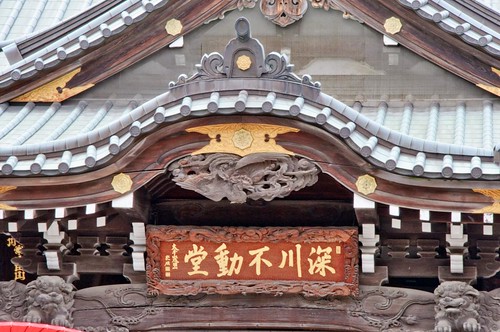
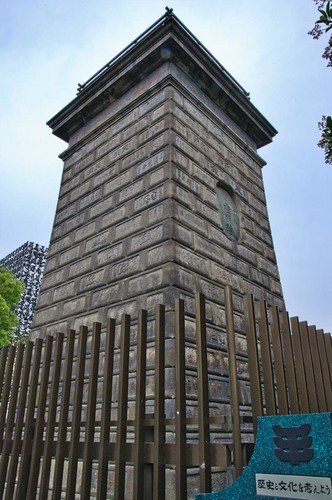
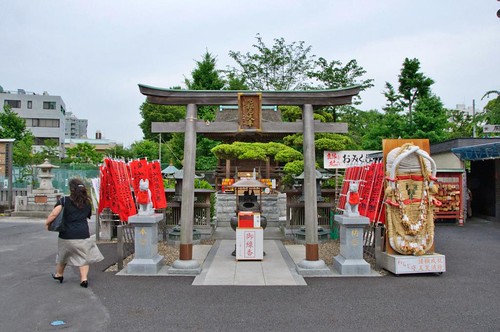
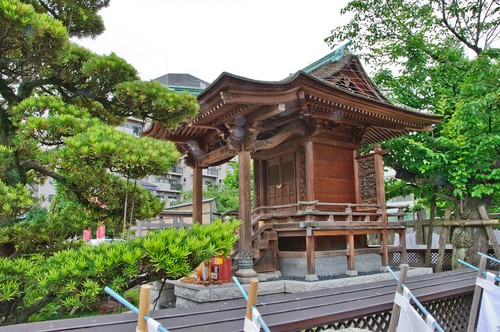
At the beginning of the Edo period, Kabuki actor Danjuro Ichikawa (the founder of Kabuki’s Ichikawa family, now in the 12th generation) performed exceptionally as Acala in a hit play, as a result, paying a religious visit to Acala at the Naritasan temple to improve one’s fortune become popular among the people in Tokyo. In 1703 a special religious display from Naritasan was held at the former eidai temple, marking the beginning of the Fudogawa temple.
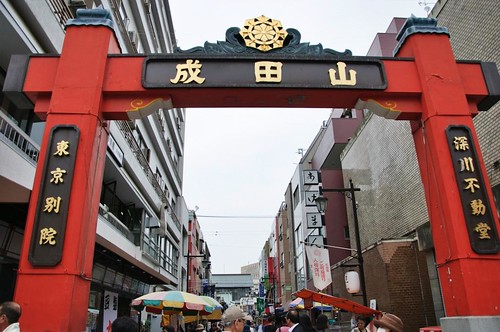
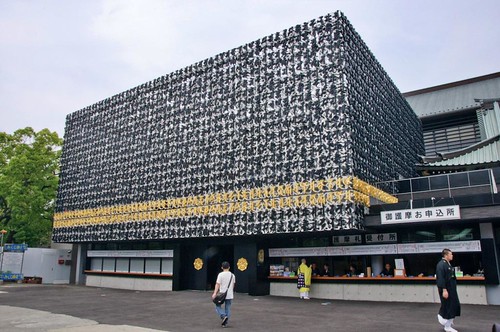
This year the temple has just completed the construction of the new hall, a modern building with a mantra to Acala in Sanskrit written around the building façade.


As in the Naritasan temple, there is a fire ritual held everyday, with the first part of the ceremony held outside the temple. Unfortunatelly photographs are not allowed inside, so you will have to visit the temple to witness the ceremony.
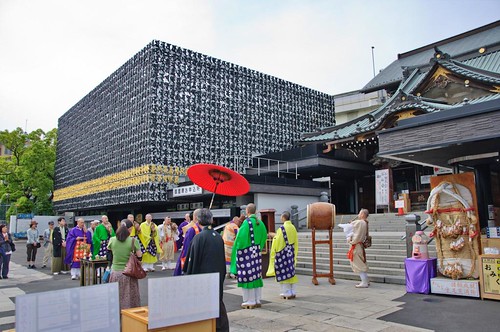
The new building is connected to the old one, creating a striking contrast, and a bold statement from this very conservative temple.
View Fukugawa Fufoufou in a larger map
Español
4 comments:
Nice one. I guess it's always an interesting question whether or not 'no cameras allowed' is a good thing or not. I always respect temples/shrines directions - but feel annoyed by some places that say, yes, you can take photos as long as you pay a donation. Prayers and religious donations shouldn't be combined with 'paid services' IMO. I feel better if they just say no photos.
What's your thoughts on it?
I really understand when there is a 'no photos allowed' sign, the flash may damage the religious objects and art, and also bother the other visitors. About Paying fees, as a principle I will never pay to be allowed to take photos, or some places overpriced fees just to visit no so well kept tiny gardens, most of the times this is obvious but on some occasions I found out after entering. You may not know but some of the small places are run by a family, and passed over from a generation to the next, Although I am sure that some of the keepers are guided by the most deepest religious motivations, this does not ensures that the next generation will have the same motivations.
I agree... from a preservation perspective, and a religious sensitivity perspective I think most people would be happy to respect the wishes.
When I was in Yokohama last year, we visited a couple of temples that were clearly more tourist attraction than anything. They couldn't care less what you photographed as long as you paid the fee.
Yes - it may be helping on the upkeep; but ultimately I think that detracts from the locations... and leaves a bad feeling when you unknowingly go to photograph something only to be told to pay a fee first (with no signs).
I was in Kyoto recently and visited Shosei-en Gardens (near Nishi-Honganji) which was supposedly a voluntary donation-based garden. When I was about to go in, they had a security guy out the front to "direct" me to where I had to pay (voluntarily). Needless to say, I donated my money somewhere else. Which was sad...
It wasn't how much the entry was (though from memory it was about 500 yen), but was the principal of having a nice gesture of donating money to a good garden replaced by being threatened to pay or leave. I still don't understand what the deal was... and how many gardens have full-on security guards?
Weird.
深川不動尊懐かしいです。
いつもここに、お散歩に行っていました。
Post a Comment